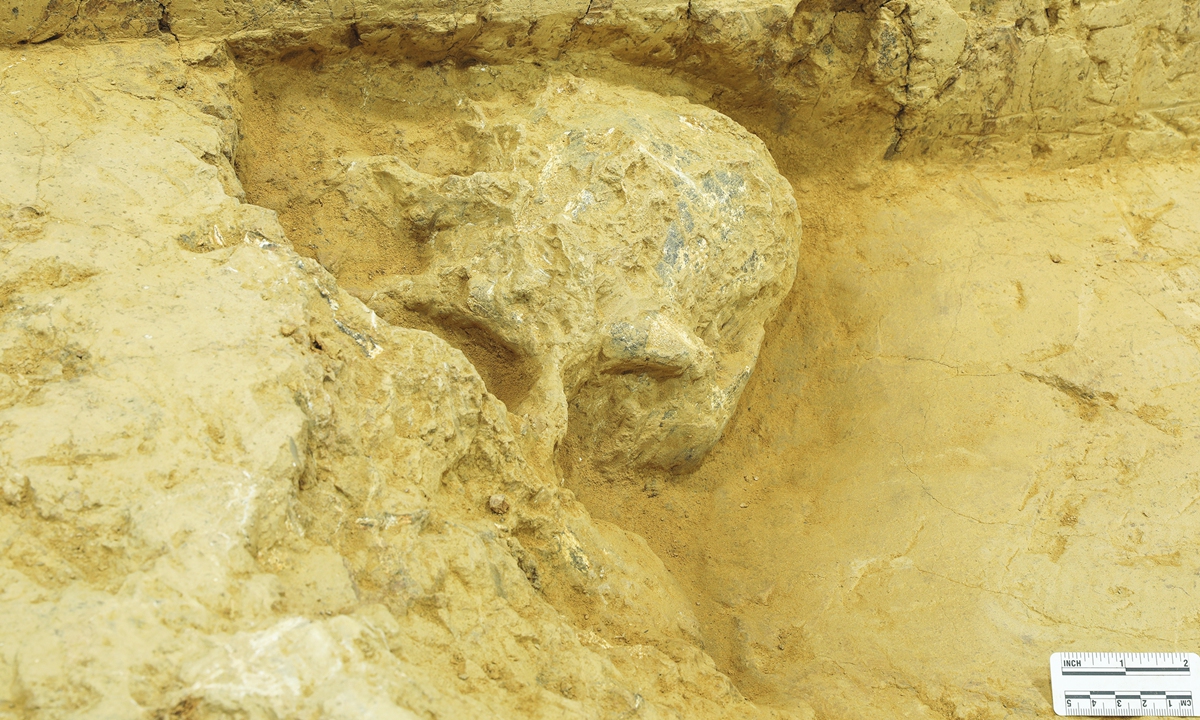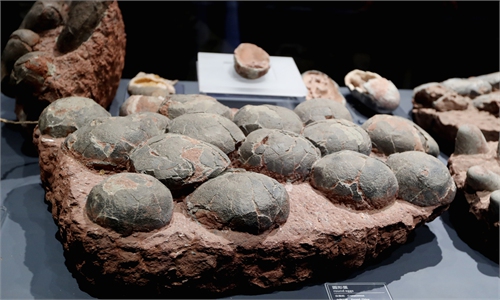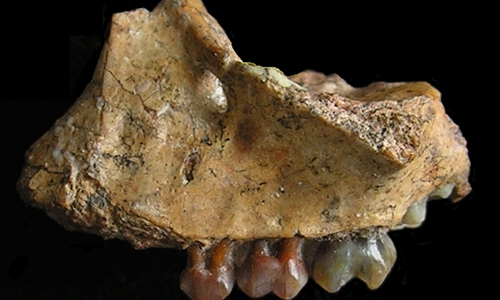ARTS / ART
Chinese civilization origin-tracing sees progress, finds 1 million-year-old human skull
Digging deeper

The fossil of a human skull found in recent national civilization origin-tracing program Photo: Courtesy of the National Cultural Heritage Administration
The fifth stage of the "national research program dedicated to tracing the origin of Chinese civilization" has made progress, China's National Cultural Heritage Administration announced on Wednesday at a press conference introducing new archaeological discoveries such as a 1 million year old fossil of a human skull and ruins of an ancient wharf as well as breakthroughs concerning archaeological technologies.
The projeThe fifth stage of the "national research program dedicated to tracing the origin of Chinese civilization" has made progress, China's National Cultural Heritage Administration announced on Wednesday at a press conference introducing new archaeological discoveries such as a 1 million year old fossil of a human skull and ruins of an ancient wharf as well as breakthroughs concerning archaeological technologies.
The project to trace the origin of Chinese civilization aims to cover more than 200 archaeological excavation projects, among them, efforts at core ruin sites such as the Erlitou and Sanxingdui sites have seen breakthroughs, Chen Xingcan, head of the Institute of Archaeology of Chinese Academy of Social Sciences, said at the press conference.
Covering discoveries ranging from prehistoric human skull fossils to Han Dynasty (206BC-AD220) bamboo scripts, Chinese archaeologists revealed the country's latest discoveries that are helping deepen understanding of the development of Chinese civilization's "unity in diversity."
Yunxian Man III
The fossil is the third ancient human skull that can be traced to around 1 million years ago, making it the third "Yunxian Man." Recently found in Shiyan, Central China's Hubei Province, the skull belonged to Homo erectus.
Gao Xing, a researcher at the Institute of Vertebrate Paleontology and Paleoanthropology, said that the skull has not been completely excavated from the soil, but the uncovered parts, including the frontal bone and eye sockets, show no obvious damage, which surprised archaeologists and makes the fossil as the most intact Homo erectus' skull fossil found on the Eurasian continent.
The third skull was found just 35 meters away from the previous two fossil skulls and the mud covering the skull also has research value, Gao told the Global Times.
Yunxian Man lived around 1 million years ago, a key point in the evolution of Homo erectus. A connecting link between preceding and following species such as Homo erectus pekinensis, the fossil is an important discovery for research into the evolution of Homo erectus and its origin and development in China and the rest of East Asia.
Archaeological discoveries at the Heboning Ruins in Southwest China's Yunnan Province include signs of roads and riverways, bamboo scripts and the seals of officials dating back to the Han Dynasty. These discoveries are evidence of the fusion of diverse ethnic groups in ancient China and give insight into the central government's administration of frontier rural areas at the time.
In Central China's Henan Province, rich discoveries were made at a ruin site of a bridge built in the Tang Dynasty (618-907). Sporting splendid stone carvings, the ancient bridge and the other roughly 60,000 cultural relics discovered in the area are valuable materials for research on the regional cultural evolution of China's Grand Canal, the world's longest man-made waterway.
The ancient ruins of a port and wharf found in Wenzhou, East China's Zhejiang Province, provide a window into a time when the Maritime Silk Road was flourishing.
Technological assistance
All these archaeological discoveries would not have been made without the assistance of the advanced technology.
Chen pointed out that archeological institutes throughout China have continued developing new technologies to confirm the ages of relics and research the natural environment in ancient times.
During research of these new discoveries, archaeological teams made use of technologies such as laser scanning and three-dimensional reconstruction, micromorphological analysis, geological and geomorphological research, and paleo-environmental reconstruction.
They make full use of these modern scientific and technological means to study relics to their maximum extent, thus ensuring the quality and high standards of China's archaeological work.



